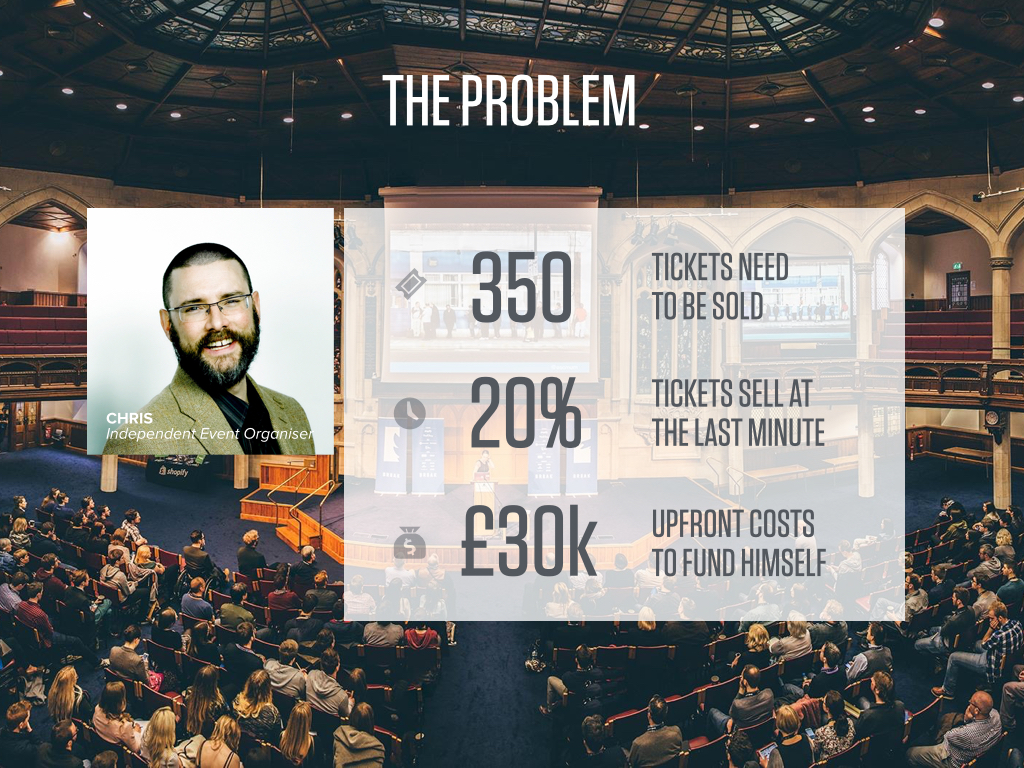8 Lessons I’ve Learned from Delivering 50 Startup Pitches
Unlike most people, I love pitching and over the last 18 months, I’ve delivered over 50 startup pitches across the world while participating in startup competitions and pitching to investors.
I’ve pitched at accelerators like 500 Startups and eBootcamp at Stanford University in California, Seedcamp and also in front of investors like Bill Tai, Sean Percival and Carlos Espinal.
I’m not the most smooth-talking presenter in the world, but I’ve learnt a few lessons that you can apply to your own pitches to help articulate your story.
Here’s what I’ve learned:
1. Master Your Lift Pitch
You need to be able to clearly explain to your audience in the first 30 seconds what your business does and get them excited enough to want to listen to the rest of your pitch.
Too many people overwhelm their audience at this part with buzz words and technical jargon to make their business sound more impressive (and make themselves look smarter) but this usually just confuses people.
This TechCrunch Disrupt Parody from the Silicon Valley TV show series is shockingly close to the truth on many occasions.
All you need to do is explain what problem you solve and for who, like this:
Get Invited helps event organisers sell tickets and market their events online
This doesn’t get the audience excited though, so usually I’ll enhance this with a bit of name dropping.
Get Invited enables event organisers to sell tickets and market their events online. We’ve helped customers like Jason Calacanis sell over 11,000 tickets for his LAUNCH Festival in San Francisco, the world's largest startup conference.
This usually grabs peoples attention and gives them a reason to listen to what I’m about to say for the next 3-5 minutes.
While this sounds really easy, it took me a long time and many iterations to distil this line into something simple and easy to understand.
Your mind often makes you feel guilty for saying something simple and urges you to make it more complicated and sophisticated, but the key thing here is crystal clear communication from the onset.
2. Tell a Structured Story
There are many variations and suggested narratives out there for structuring your startup pitch. The key thing is finding a structure that works for your own unique story and enables you to clearly communicate to your specific audeince the key points that they are looking for.
Investors in Silicon Valley expect certain information in a specific structure and you can't really deviate from this too much.
10 Slides for a Perfect Startup Pitch Deck is a great guide for putting together a US investor pitch. In the UK and Ireland you can be a bit more flexible.
I use the following format –
- Lift Pitch: Your name, what your company does and some social validation in the form of customer name-dropping and traction.
- The Problem: Who is the customer and what are their pain points?
- Market Size: How big is this problem? How many potential customers are there?
- The Competition: Who else is doing this? I address this early on as we’re in a competitive space and I need to pitch Get Invited against the competition and explain why we're different.
- The Solution: How does your business solve the problem and what is unique about your solution?
- Business Model: How do you make money?
- Go-to-Market Strategy: How are you going to get customers and how much does it cost to acquire a customer?
- Team: Who are the founders and management team and what experience do they have?
- Traction & Vision: What have you achieved already (users, sales, investment) and where can you get to in 3-5 years? What milestones will you achieve? This isn’t just your financial projections, you need to get your audience excited about your vision for the company.
- The Ask: A summary of points 1-9 and what you’re asking for, which is probably an investment.
3. Explain The Problem Using a Case Study
The easiest and clearest way to explain the problem is with a case study using one of your customers.
I struggled with this part of the pitch for a long time until I experimented with using a real customer persona, when I did this – people instantly understood who the customer was and what their problems are.
Here’s the slide I use:

This shows a real event organiser called Chris and clearly explains his problem in three easy to understand points. I then mention that Chris is part of the Get Invited team, which builds validation that we've experienced the problem ourselves by running our own conferences.
It seems really obvious that I should do this, but as I mentioned earlier, when you’re very close to your business it takes a lot of iterations and trial and error to get the story right.
4. You’re Pitching a Business, Not a Product
The single greatest challenge for every entrepreneur is trying to stop endlessly talking about their product and all the cool features it has.
Investors don’t care about your features, they care about how your product solves the problem and delivers value to customers in order for them to give you money (so you can build a profitable business).
You need to clearly explain your value proposition and the mechanics of your business, not the features of your product.
What is your sales and marketing strategy to acquire customers? Can you acquire customers profitably? How much money can you make from this?
Most investors will assume that your technology works, you can include one screenshot to show your product but you don’t need a 40 slide walkthrough of how it works.
5. Avoid Vanity Metrics
Stick to fundamental metrics like users, beta signups and revenue. Too many people choose to use big number metrics that don’t actually mean anything. If you have revenue, then show it and be proud of it. Even if it’s a small amount, having any revenue is a big achievement for a startup and it validates that you have a product people are prepared to pay for.
Talk about month-on-month revenue and user growth to illustrate that your company is taking off and avoid using ambiguous metrics like ‘data points’ and ‘engagement rate’.
6. Don’t Exceed Your Allocated Time
If you really want to frustrate your audience (and if you want a brutal grilling from investors) then continue speaking for several minutes after your allocated time is up.
How can you avoid doing this? Practice!
If you’ve rehearsed your pitch a handful of times in advance then you should have a firm idea of the length of time it takes to deliver it.
Practice with a stopwatch and make a mental note of the time every time you move onto a new slide in your pitch, then you can adjust your speed accordingly as you go to ensure you don’t run over.
Most setups will have a timer on screen, or someone holding one on an iPad while you pitch but you can have your mobile phone with the stopwatch app loaded to help you if you need to.
7. Design Your Slides (Or Pay Someone Else To)
I may be a little bias (and pernickety) because I come from a design background, but most people can spot a poorly designed presentation. Not only does it look bad, but it also makes it harder to communicate your points if your slides are messy and confusing.

If you’re not a designer, then don’t even attempt to design your own slidedeck – find someone who can help you or pay a professional. Most slidedecks I’ve seen are really poor, so making this extra effort will ensure that you stand out and communicate your story clearly.
It also looks more professional and establishes you as a quality brand who care about the details.
8. Close with a Summary and Call To Action
Most pitches are a short whirlwind of information and often finish abruptly with no clear call to action. Always use a summary slide when you finish that re-iterates the key points of your presentation:
- Your name and company
- What it is you do
- What traction you have
- Your vision
- A clear call to action
The last point is the most important; what do you want your audience to do next? Give you money?
Finish on a high note and make your offer sound exciting and include a sense of urgency to encourage people to act quickly.
“We’re now raising £2m to exploit an immediate opportunity to move into the European market and deliver revenues of £50m by 2018, we have 40% of the round committed and we’d love you to join us today on this exciting journey”
In Closing
You will be forever tweaking and adjusting your pitch as you continue to build your business. It will take many iterations to get it in good shape and you can only do this by practicing and listening to feedback from other people.
In addition to the 50 pitches I’ve given, I’ve literally spent hundreds of hours practicing on my own to get it right.
It's a slow process but practice makes perfect!
What tips do you have for pitching?